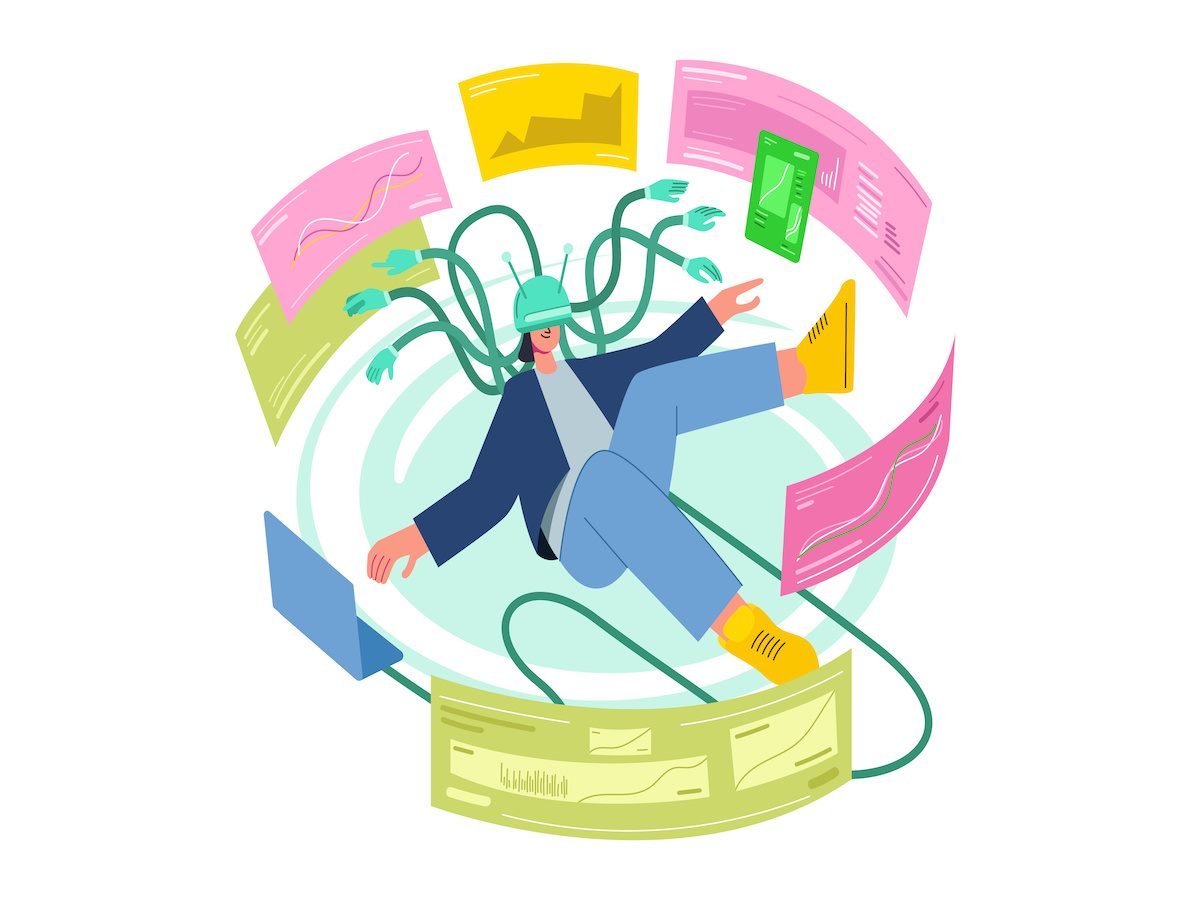As a neuroscientist who has authored books on the very architecture of memory and its application in business, I can tell you this: the modern leadership role is a direct assault on the brain. For years, I've felt the relentless cognitive overload: the fractured focus, the decision fatigue, the creeping brain fog. It's a war of attrition we are all silently losing.
But over the past five years, I've started fighting back, not with more willpower, but with a new arsenal of intelligent tools. I'm not just deploying AI for my business; I'm deploying it to augment my own mind. This isn't a theoretical exercise; it's my daily reality, and it has been nothing short of transformative.
Key Takeaways
- Your Brain Is Your #1 Asset; Stop Running It on Empty! AI can be used as a high-performance cognitive toolkit to restore focus, memory and decision-making power.
- AI as Your Personal Chief of Staff. Tools are here to manage your schedule, take your notes and guard your time, freeing you to actually lead.
- Cure Decision Fatigue Before It Kills Your Strategy. Use AI decision assistants to synthesize data and options, preserving your best mental energy for the calls that truly matter.
- "Brain Fog" Is Now a Solvable Problem. With AI health monitors and wellness coaches, managing your mental stamina is no longer guesswork; it's a data-driven strategy.
- The Augmented Executive Is the New Standard. The real leadership revolution isn't just deploying AI for your company; it's deploying it to upgrade your own mind.
My professional life has been a dual obsession. As a neuroscientist, I've spent years mapping the intricate architecture of the human brain, work I detailed in my book, "The Tapestry of Memory: Unraveling the Threads of the Mind." As a business executive, I've focused on translating these neurological principles into actionable strategies for business success, the very foundation of my book, "60/90: The Neuroscience-Backed Plan for Business Success." And I can tell you with absolute certainty: the modern executive role, in its current form, is a direct violation of the principles I've spent my life studying and writing about.
We are depleting our most critical asset — our own and our teams' cognitive capital — at an alarming rate. For years, I accepted this as the price of leadership, fighting a losing battle with the blunt instruments of the past: more caffeine, longer hours and the sheer, grinding force of will.
But a profound shift has occurred. I've begun to apply my understanding of the brain to the tools of AI, not just as a business strategy, but as a personal one. I've started to architect my own cognitive operating system, using AI to offload my burdens and amplify my strengths. This isn't about replacing my mind; it's about saving it.
Related Article: AI Talent Dilemma: Do We Need More Coders or AI-Literate Leaders?
Table of Contents
- The Neurological Reality of Executive Burnout
- My Personal Cognitive Toolkit: How I Augment My Mind With AI
- How AI Has Provided Me With Tangible Results
- The Leadership Mandate: From Personal Hack to Organizational Strategy
- Augment Your Own Intelligence
- FAQs
The Neurological Reality of Executive Burnout
From a neuroscientific perspective, the executive brain is under constant siege. The prefrontal cortex, our hub for planning, decision-making and focus, has a finite daily capacity. Every trivial decision, every notification, every unnecessary meeting depletes this resource, leaving us vulnerable to "brain fog" and poor judgment when we need clarity the most.
The traditional playbook of "powering through" is neurologically absurd. We don't need better coping mechanisms; we need a fundamentally new operating system for the executive mind.
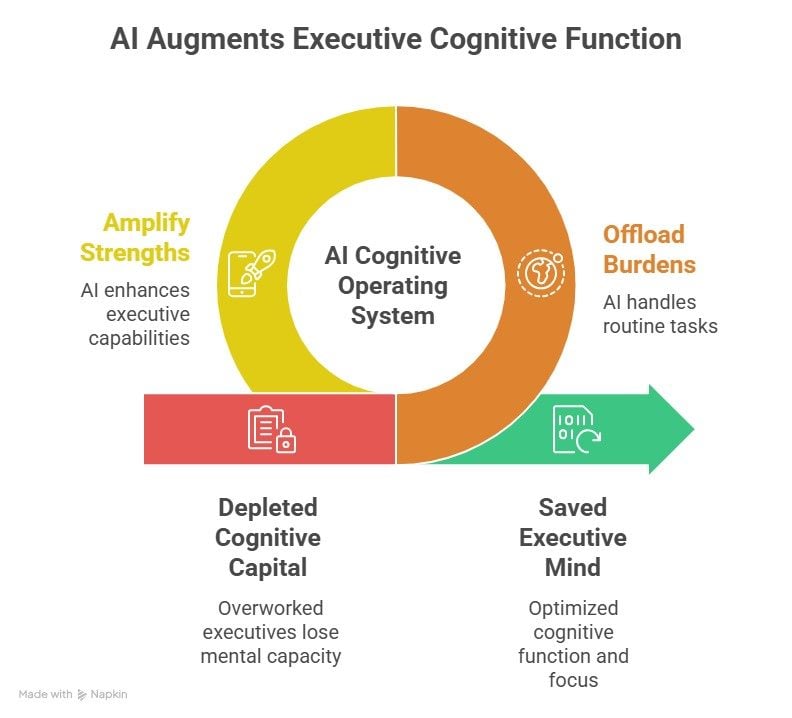
My Personal Cognitive Toolkit: How I Augment My Mind With AI
The good news is that this new operating system is no longer theoretical. It's practical, actionable and sitting on my desktop right now. For every major cognitive challenge I face, I've integrated a corresponding AI-powered solution into my daily workflow.
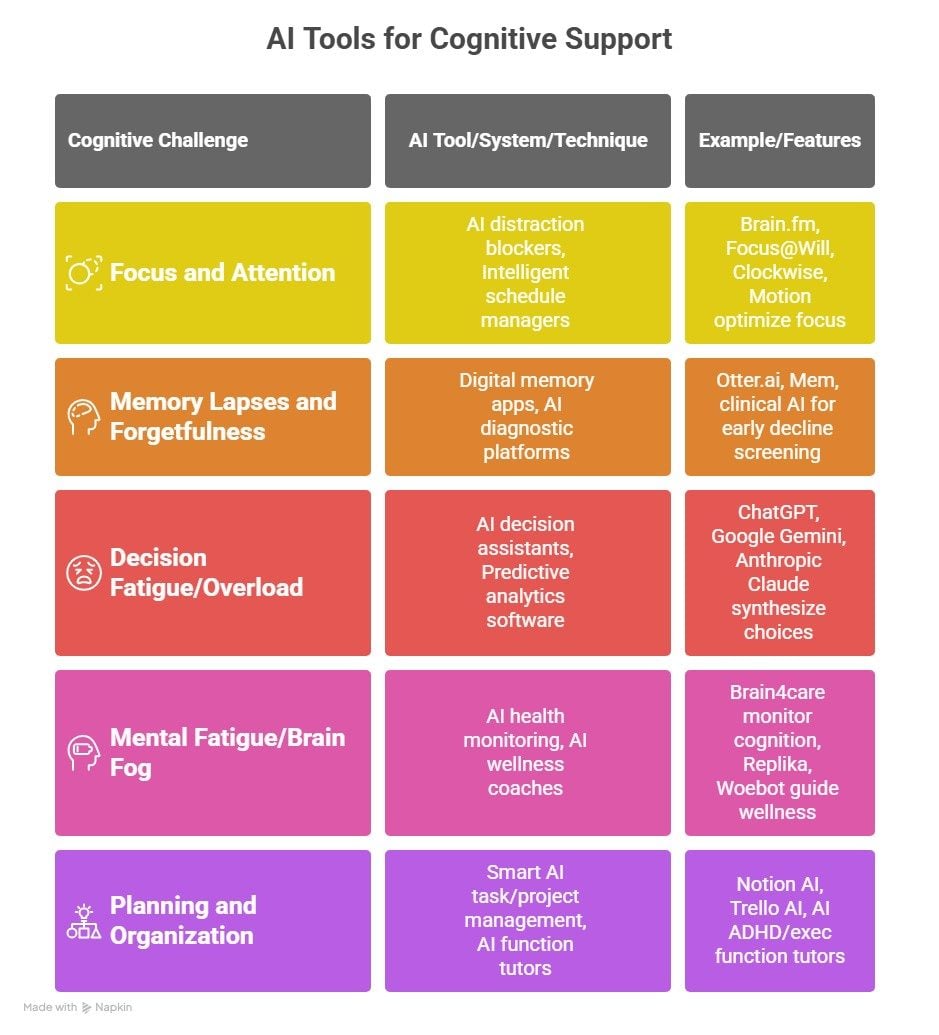
1. Reclaiming Deep Focus in a World of Distraction
My day used to be a series of interruptions punctuated by brief moments of work. Now, I use AI as my cognitive shield. My go-to is Brain.fm, an AI that generates personalized soundscapes scientifically designed to help the brain enter and sustain a state of deep focus. Paired with an intelligent calendar tool like Motion, which automatically analyzes my schedule and ruthlessly defends blocks of "deep work" time, my ability to think strategically for uninterrupted hours has been restored.
2. Building a Perfect, Searchable Memory
Having written "The Tapestry of Memory," I'm acutely aware of how fragile our biological recall can be under stress. I've now outsourced that cognitive load. I use Otter.ai for all my important conversations. It transcribes everything, but more importantly, its AI provides instant, accurate summaries of key decisions and action items. My brain is no longer a cluttered filing cabinet; it's a processing unit, and Otter is my perfect, searchable archive.
3. Curing My Own Decision Fatigue
By late afternoon, my decision-making quality used to plummet. Now, I use AI as my tireless junior analyst. Before a major strategic choice, I task Google's Gemini or Anthropic's Claude with synthesizing research, outlining the pros and cons of different options and stress-testing my assumptions.
This capability isn't just for summarizing meeting notes; it's now operating at a level that was once the exclusive domain of deep human expertise. I recently explored this very phenomenon in an article titled, "My PhD Took Years, Now AI Can Do Parts of My Job in Hours." In it, I detailed how AI can now perform complex research synthesis and data analysis — tasks that formed the core of my doctoral work — with astonishing speed.
It's a humbling and profound realization. But the takeaway isn't fear of replacement. The strategic insight is that if AI can offload work at this level of complexity, it can certainly handle the day-to-day analytical burdens that lead to executive decision fatigue. It frees us to focus on the one thing the AI can't do: apply true wisdom, context and strategic judgment to that analysis.
4. Dispelling Mental Fatigue and 'Brain Fog'
As a neuroscientist, I'm fascinated by the direct link between our physical state and our mental clarity. To connect my daily habits to my cognitive performance, I rely on my Oura Ring. Its AI doesn't just give me a simple sleep score; it analyzes my heart rate variability (HRV), body temperature and sleep stages to generate a daily "Readiness Score." This insight is invaluable, telling me when I have the cognitive capacity to tackle my most demanding strategic work and when I need to prioritize recovery to prevent burnout. It's a proactive defense against the brain fog that plagues so many of us.
This personal physiological data is complemented by my exploration of platforms like Brain4care, which uses non-invasive sensors to provide real-time tracking of brain compliance, offering a glimpse into a future of even deeper neurological monitoring. And on a daily basis, when I need an immediate intervention, I use AI wellness coaches like Woebot for short, evidence-based mindfulness exercises that act as a mental reboot during a stressful day.
5. Mastering Planning and Organization
To manage complex projects, I've integrated Notion AI into my workflow. It helps me deconstruct large initiatives into manageable tasks, suggests timelines and automates progress summaries. It brings an effortless clarity and structure that frees my mind to focus on the creative and strategic aspects of the work, rather than the logistical minutiae.
Related Article: Best Free AI Tools in 2025: Top Picks for Writing, Design, Productivity and More
How AI Has Provided Me With Tangible Results
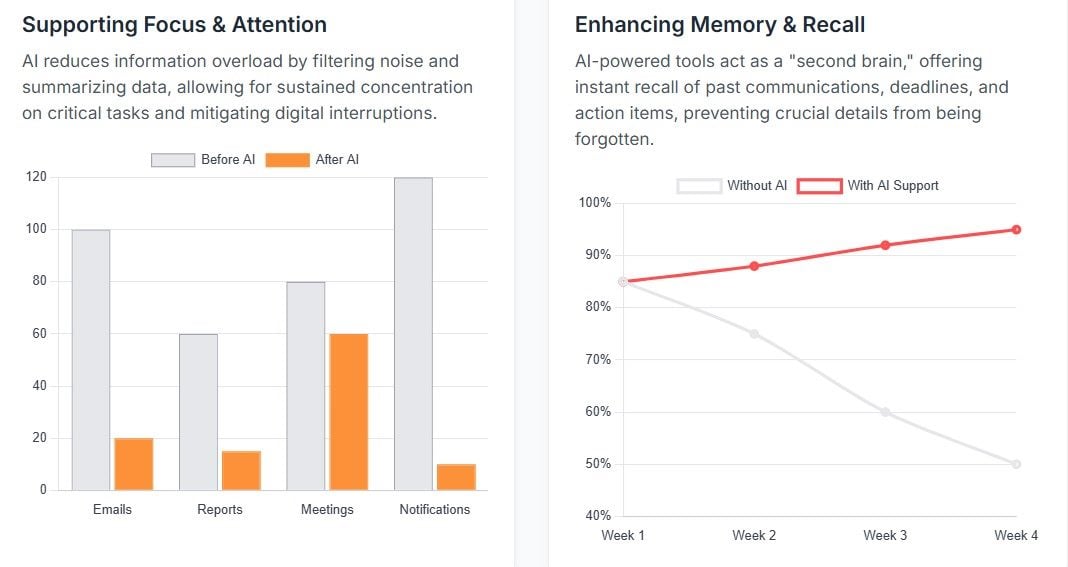
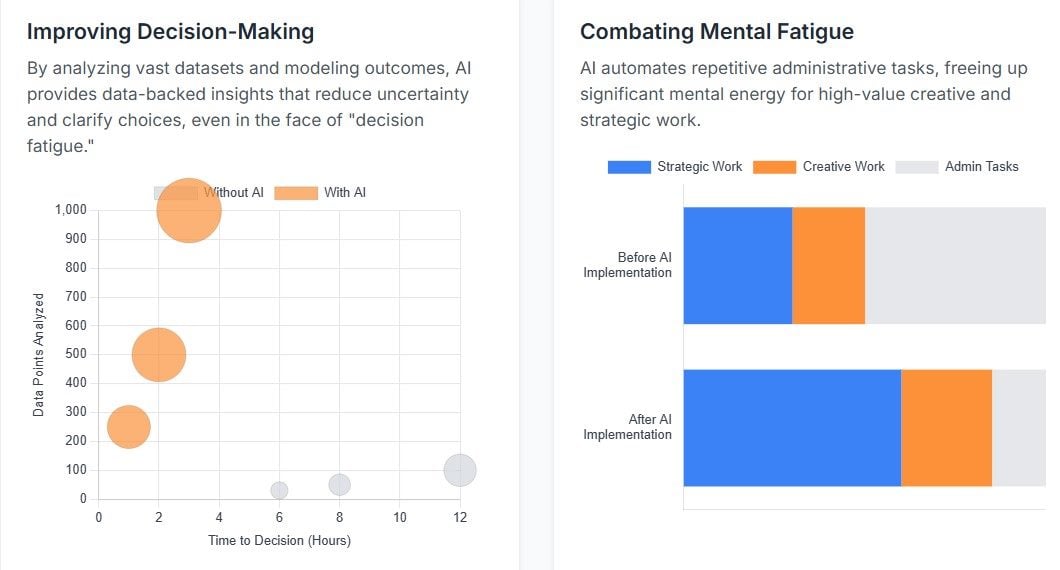
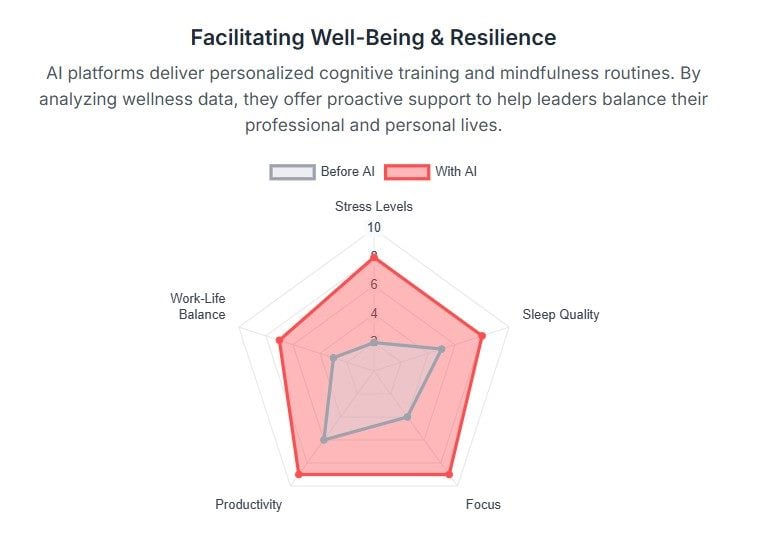
The Leadership Mandate: From Personal Hack to Organizational Strategy
My personal experience has convinced me of one thing: this is too important to be left to individual life hacks. In my book "60/90," I laid out the neuroscience-backed principles for sustainable high performance. What I've discovered is that these AI tools are the perfect accelerators for those principles, allowing us to implement them at a scale and with a consistency that was previously impossible.
As leaders, we have a responsibility to make this cognitive toolkit a core part of our organizational strategy.
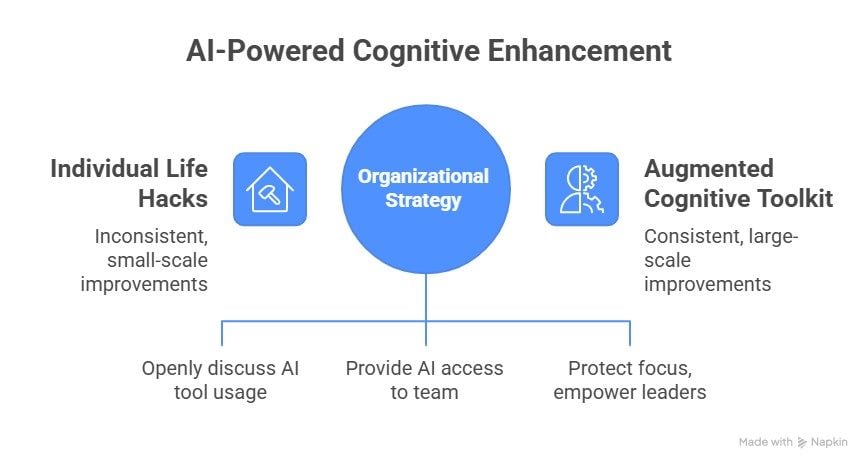
- Destigmatize Cognitive Support: I talk openly with my team about the tools I use. I frame them not as a crutch, but as a high-performance toolkit for a demanding cognitive sport.
- Invest in Your Team's Cognitive Health: We now provide access to these AI solutions as a strategic investment in our leadership team's effectiveness and longevity.
- Redesign Work for the Augmented Age: We are actively redesigning our culture to protect deep focus, to make meetings fewer but more effective and to empower our leaders to offload cognitive burdens to their AI partners.
Augment Your Own Intelligence
For too long, we have treated the executive mind as an infinitely resilient resource, only to watch it buckle under the unsustainable pressures of the modern world. As a neuroscientist, I know the brain's limits. As a business executive using these tools, I now know we can transcend them.
By thoughtfully integrating this intelligent technology into our own lives, we can do more than just prevent burnout; we can augment our own intelligence, restore our focus and free ourselves to be the creative, strategic and deeply human leaders our organizations so desperately need. This isn't about the future of AI; it's about the future of leadership itself.
FAQs
Learn how you can join our contributor community.
